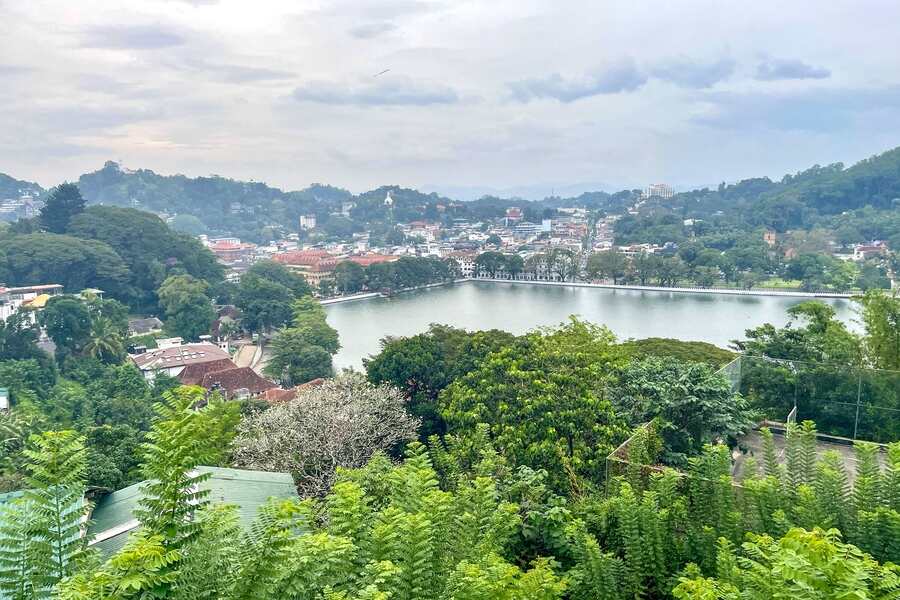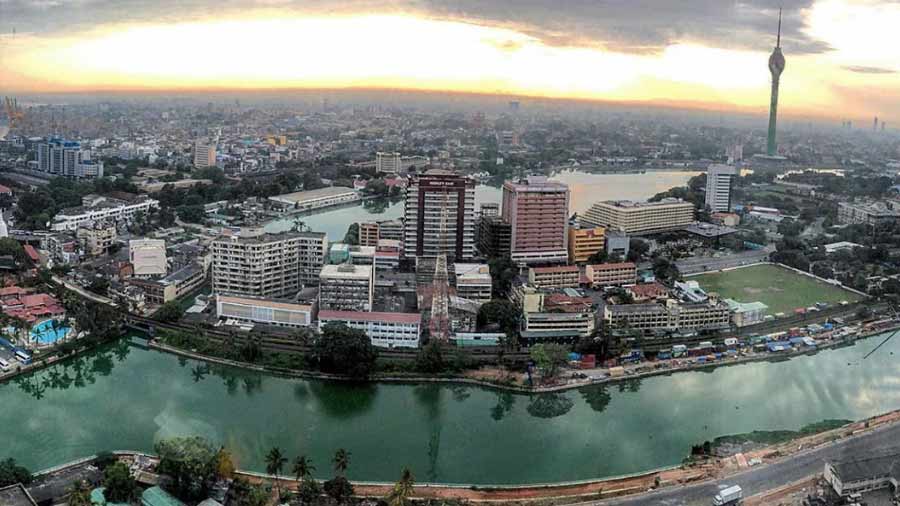My villa at Santani Wellness opens to a classic Sri Lanka tea country vista — rolling hills shrouded in mist, with a soundscape of birdsong and distant thunder. For my trip to Kandy, I have chosen to stay away from the bustle of Sri Lanka’s second largest city, at this premier wellness sanctuary located in the quiet countryside.
The first thing that strikes me as I step out of the cab at Santani Wellness is open space, with the indoors seamlessly merging with the outdoors. With only 20 chalets across the sprawling property, Santani Wellness offers me a chance to unwind from the stress of modern urban life in utter peace and privacy. It is stress I am not even aware of holding, until I feel the knots in tight muscles easing out under the expert hands of my therapist during a soothing abhyanga massage. Over the next couple of days, I take dips in their heated indoor pool, sweat it out in the sauna and steam chambers, and end a long day with a relaxing shirodhara treatment, where warm medicated oil is poured on my forehead in a gentle stream, as I drift away into somnolence.
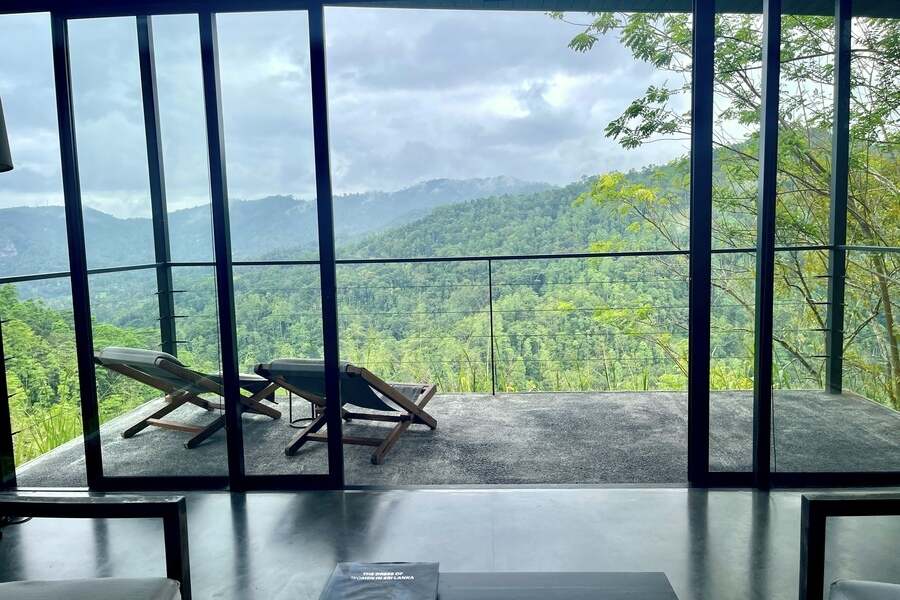
The view from the chalet at Santani Wellness
People from all over the world come to Santani Wellness seeking anything from a simple rejuvenating break to a lasting cure for chronic health issues. Along with the ayurveda treatments, everything else here is designed to offer holistic wellness – from barefoot walking in the spa and dining areas to feel the texture of the wooden floor underneath, to yoga sessions in open-air pavilions, guided hikes in the surrounding forest and a restaurant that serves up fresh local and international cuisine tailored to your tastes. I am not surprised to learn that the architectural ethos here is based on the Sri Lankan concept of ambalama, which denotes a traditional place of rest for travellers.
Temples and tea
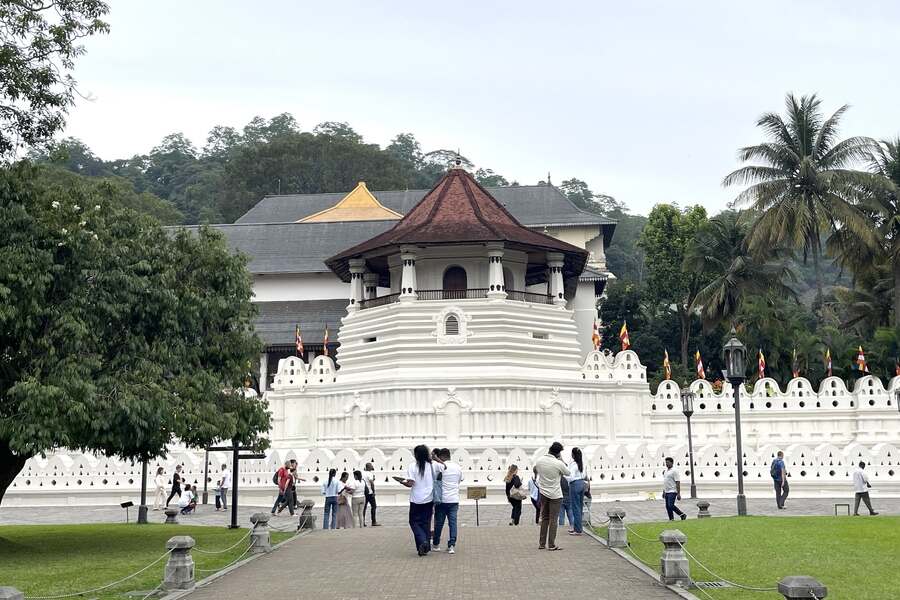
Sri Dalada Maligawa, or the Temple of the Tooth is a revered Buddhist pilgrimage site
But it is not all massages and mindfulness; I want to see something of Kandy too. So, one cloudy afternoon, I head out for a walking tour in the town famous for housing Theravada Buddhism’s most sacred site — Sri Dalada Maligawa, more popularly known as the temple of the tooth relic. “Most tourists think of Kandy as a day-trip destination, or at best, spend one night here on their way towards Nuwara Eliya or up north to the Buddhist circuit,” says Donald Premasuriya, my guide on this walk through Kandy’s historic core. As a local, he wants these tourists to know that his city deserves more of their time and attention, and he is determined to give me a glimpse of its multicultural spirit.
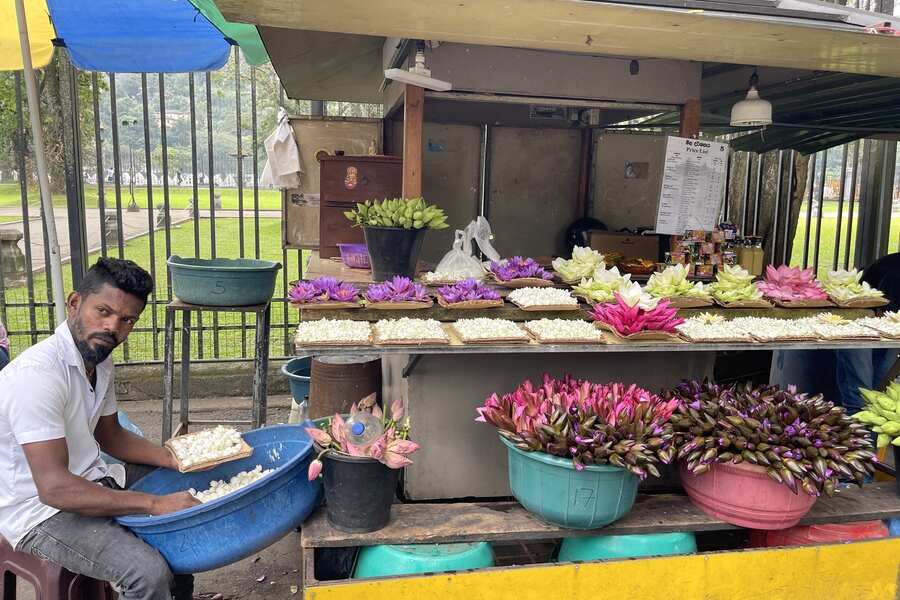
Flower sellers dots the streets around the Tooth Temple
Kandy sits at the centre of Sri Lanka’s mountain region, at the very heart of this teardrop-shaped country with a range of diverse tourist attractions that belie its small size. As the last seat of Sinhalese royal power, Kandy is one of Sri Lanka’s most significant historical and cultural hubs today, with a flourishing arts and music scene. It also plays a major role in Sri Lanka’s modern economy, being the place where a young Scotsman James Taylor first planted tea in this country in 1867. Sri Lanka is now the fourth largest tea exporter in the world, and the country’s tea history is showcased at the Ceylon Tea Museum in town.
Walk through history
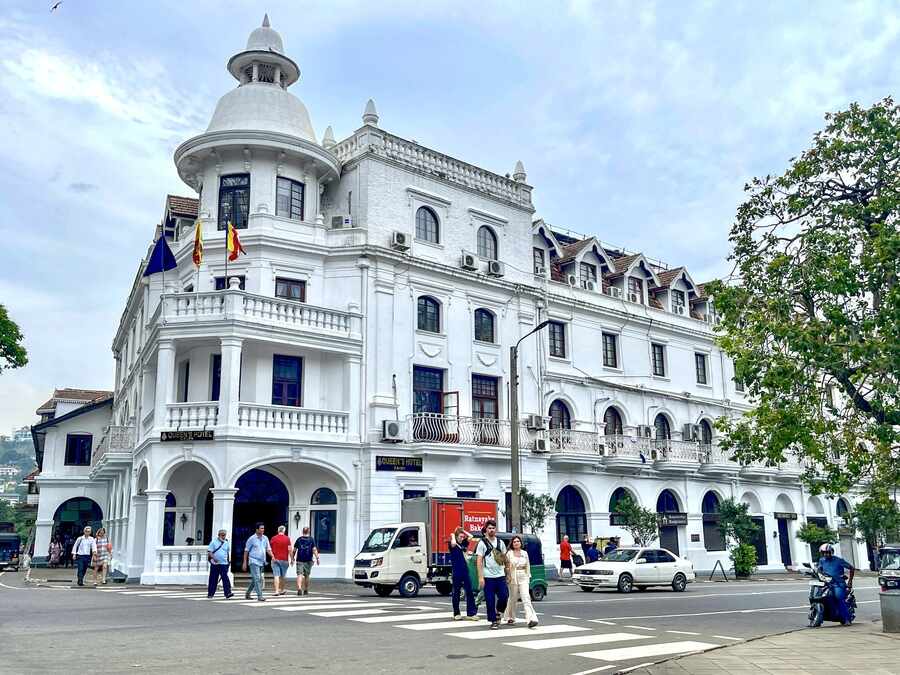
Queen’s Hotel in the heart of Kandy was a home for the British governor of Ceylon, a barrack, and a boarding house before its present-day avatar
Our walk begins at Queen’s Hotel, a stunning remnant from Kandy’s British colonial era. The hotel has gone through many incarnations, beginning life as a manor house under the last Sinhalese king to becoming, in succession, a mansion for the British governor of Ceylon, barracks for soldiers from the Ceylon Rifle Regiment, a hostel and a boarding house, up until its present-day avatar as a landmark hotel.
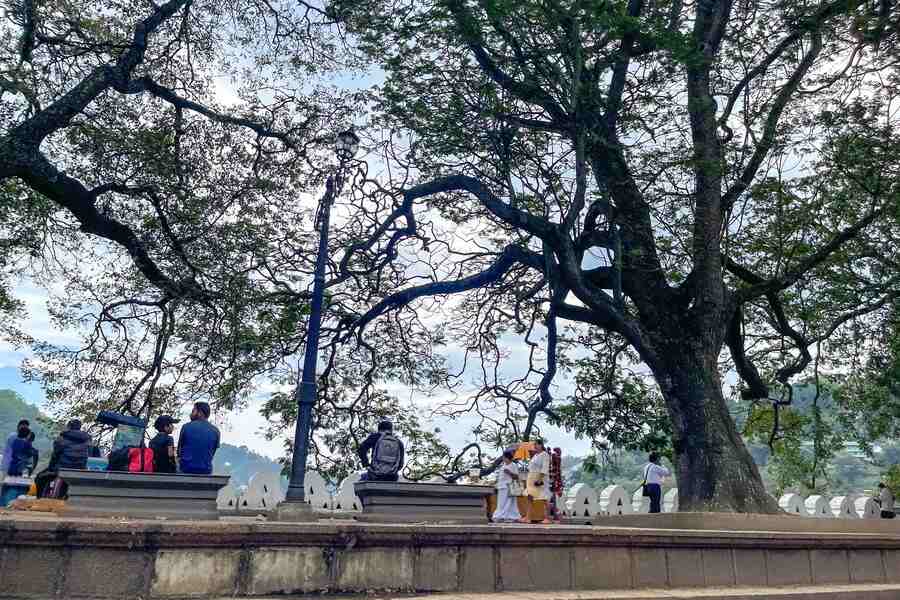
Kandy lake gives you a microcosm of the city with people from all walks of life enjoying leisurely time by the water
Queen’s has a vantage location, right across the road from the tooth temple and the sprawling artificial lake, where locals and tourists alike tend to congregate. There are devotees who have just emerged from the temple, canoodling couples who find themselves quiet corners, monks in orange robes walking in meditative silence and families with boisterous children who want all the balloons from all the vendors: it is a microcosm of life in Kandy.
Architectural gems
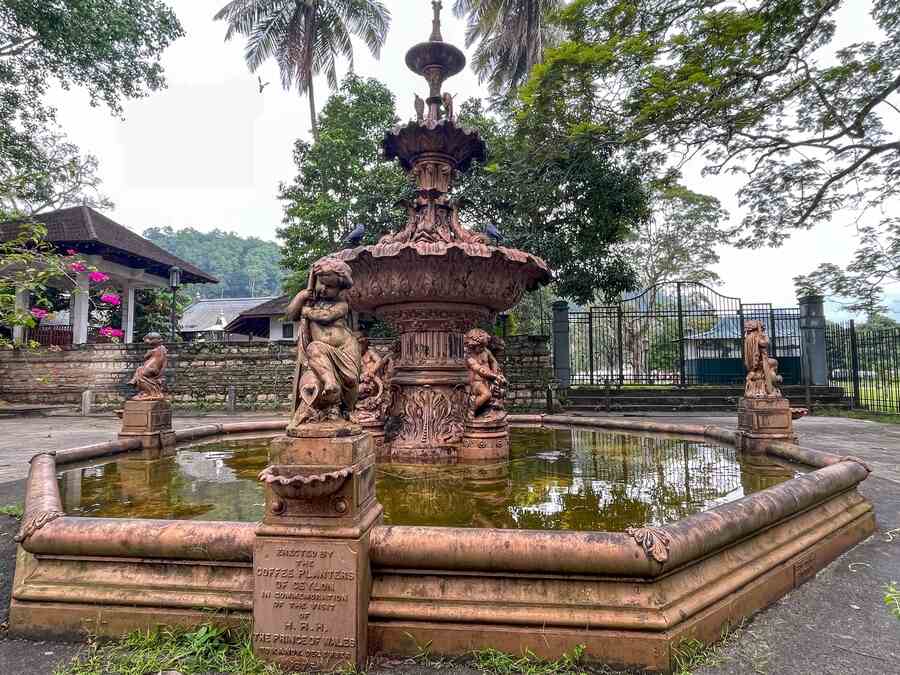
A commemorative fountain made in 1857 to welcome the Prince of Wales
The temple itself is shut for visitors when we go, so we explore the surrounding lanes, as Premasuriya points out the mishmash of architecture around the temple, embracing Portuguese, Dutch, British and vernacular styles. We walk past smiling flower sellers holding out lotus buds for the temple-goers, a commemorative fountain erected by influential coffee planters to welcome the Prince of Wales in 1857, and a Bodhi tree said to be an offshoot of the original one in Bodhgaya, under which Siddhartha Gautama attained enlightenment.
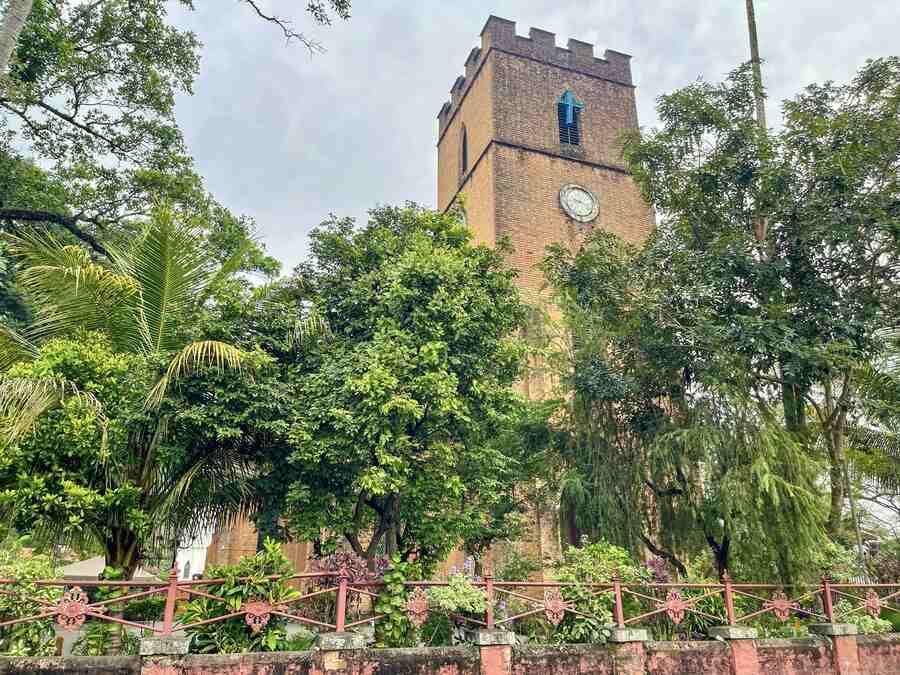
The foundation for the Anglican St Paul’s Church was laid in 1843
There are other temples (devale) in and around this complex. Enshrined within are Hindu gods including Vishnu and Murugan, but these are spots where Buddhist pilgrims also worship. Just down the road is the brick-red St Paul’s Church, while further along is the striking red mosque, a smaller cousin of the iconic Pettah red mosque in Colombo. Premasuriya keeps up a steady chatter about life in Kandy, as we amble through a crowded fresh market, where I get to sample plump and tangy, locally grown, pickled Ceylon olives (veralu) and gooseberries.

The Red Mosque of Kandy is located in the same road as the Lord Kataragama Temple
Back at Santani Wellness, I tuck into my meal of soft hoppers with a variety of Sri Lankan curries and sambals. The myriad flavours from the lentils, jackfruit, eggplant, shallots, coconuts and red chillis feel tantalisingly familiar, it’s what we call “same same but different.” After a long evening of nonstop walking and talking, my chalet – covered in a blanket of clouds - feels like my own welcoming ambalama (shelter).
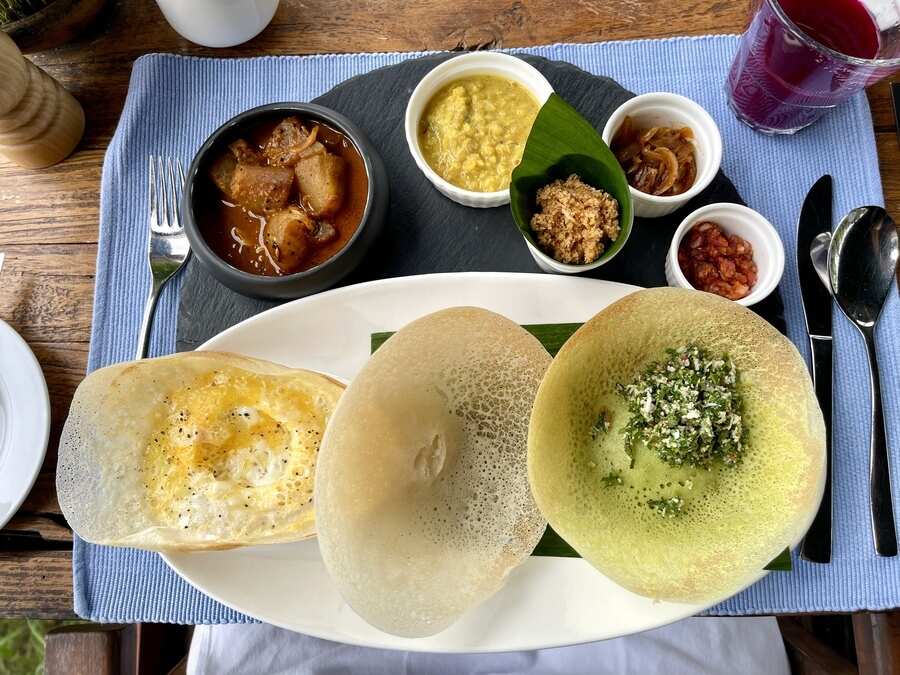
A traditional Sri Lankan meal with a variety of hoppers with lentil and jackfruit curries and accompaniments

